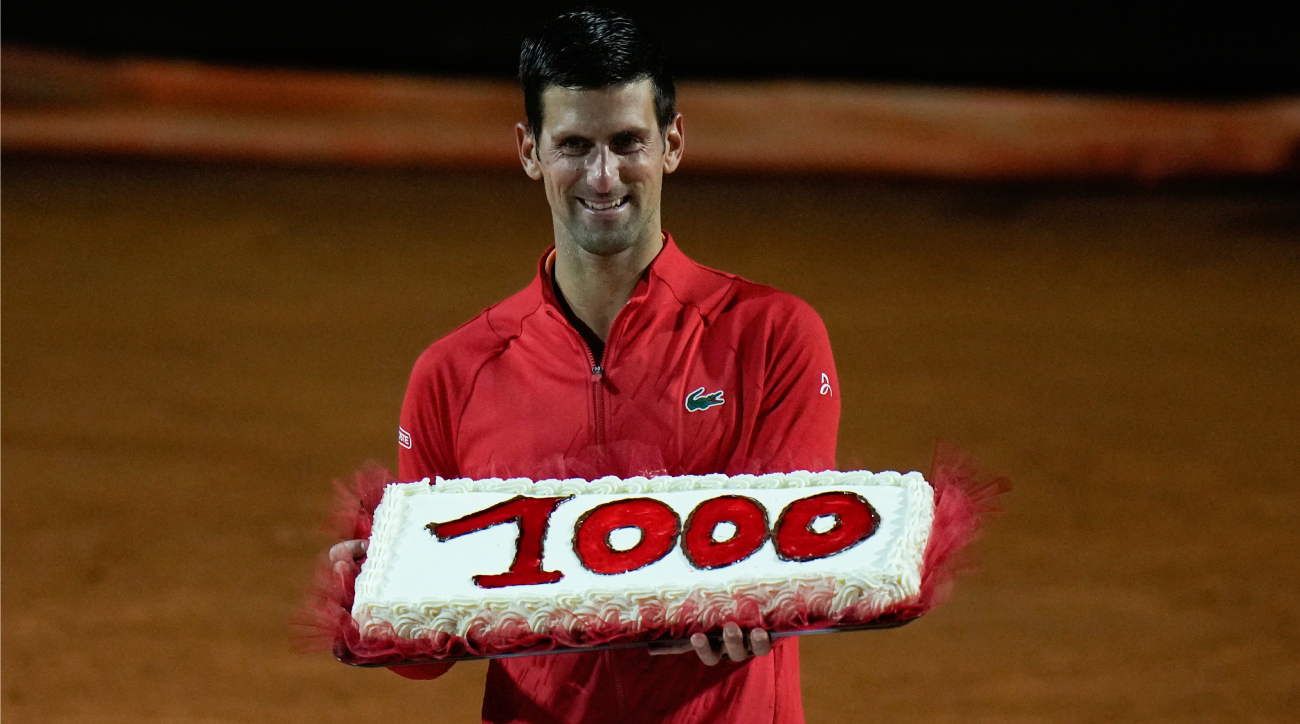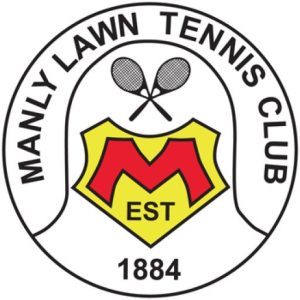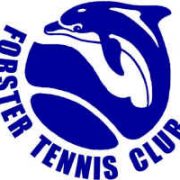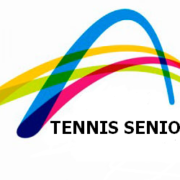Djokovic Defeats Kyrgios For 7th Wimbledon Title | ATP
/in Goss, News /by manly_adminNovak Djokovic produced a returning masterclass to surge to a 4-6, 6-3, 6-4, 7-6(3) victory against Nick Kyrgios in Sunday’s final at Wimbledon, where the top seed claimed his fourth consecutive crown at the grass-court major.
Rallying from dropping the first set for the third straight match, Djokovic claimed a seventh title to draw level with Pete Sampras‘ mark at the All England Club. The 35-year-old Djokovic is now just one behind Roger Federer’s record of eight Wimbledon triumphs, and one Grand Slam title behind Rafael Nadal’s record of 22 major crowns.
“I have lost words for what this tournament, this trophy means to me, my team, my family,” said Djokovic at the trophy presentation. “I’ve said this many times. It always has been and always will be the most special tournament in my heart, the one that motivated me, inspired me to start playing tennis in a small mountain resort in Serbia where my parents used to run a restaurant.
“I was four or five years old and I saw Pete Sampras win his first Wimbledon in 1993. I asked my Dad and Mum to buy me a racquet, and my first image of tennis was grass and Wimbledon. I always dreamed of coming here, just playing in this court, and then realising the childhood dream of winning this trophy. Every single time it gets more meaningful and more special, so I’m very blessed and very thankful to be standing here with the trophy.”
Most Grand Slam Titles
| Player | Grand Slam Titles |
| Rafael Nadal | 22 |
| Novak Djokovic | 21 |
| Roger Federer | 20 |
| Pete Sampras | 14 |
After some scintillating Kyrgios shotmaking took him to the opening set on Centre Court, Djokovic found his rhythm on return to take the upper hand in an intriguing clash of game styles. Despite his opponent firing 30 aces in a three-hour, one-minute encounter, the top seed was clinical in taking his chances, most notably when he crucially broke Kyrgios’ serve after the Australian had led 40/0 at 4-4 in the third set. A nerveless showing from Djokovic in the fourth-set tie-break, his first of the tournament, sealed the victory and extended his winning streak at SW19 to 28 matches.
Although his ability to counter Kyrgios’ huge serving was key to Djokovic’s win, the Serbian was just as efficient with his own delivery. The top seed fired 15 aces and won 83 per cent (62/75) of points behind his first serve, compared to Kyrgios’ 70 per cent (64/91).
It marks another hard-fought triumph for Djokovic this week in London, where he overhauled a two-sets-to-love deficit to defeat Jannik Sinner in the quarter-finals and rallied from dropping the first set to Cameron Norrie in the semi-finals. The Serbian also defeated Soonwoo Kwon, Thanasi Kokkinakis, Miomir Kecmanovic and Tim van Rijthoven this fortnight in London.
DO WE LIKE KYRGIOS? IT’S COMPLICATED | SMH
/in Ask the Pro, Goss, News /by manly_adminWimbledon still has a couple of days to go, which is helpful because 48 hours gives us time to have another 48 opinions on Nick Kyrgios, to add to the thousands we’ve had on Kyrgios over the past eight years. This is Australia in 2022: Girt By Nick.
Kyrgios is now a human hottake generator, in that the endless hot takes on him now generate their own hot takes about the earlier hot takes, and on and on until we die. You’re reading one right now, so please watch for any sudden change in your vital signs.
To sum up our rollercoaster journey with the tennis terror from Canberra, let’s go to the social media-speak Nick himself loves so much: It’s Complicated. WTAF. FFS. And so on.
Because let’s be honest: it’s as easy to write the column ‘‘ Ten Reasons To Love Nick Kyrgios’ ’ as it is to write the column ‘‘ Ten Reasons To Hate Nick Kyrgios’’ .
You can sensibly and sarcastically wonder out loud what it is the Kyrgios fans love about him. Is it the verbal abuse? The violent treatment of racquets and balls? The spitting? The tanking? The narcissism? Equally, you can ask the Kyrgios haters what it is they hate. Is it the breathtaking talent? The shotmaking audacity? The charming impudence of his approach to the game’s stuffed shirts? His refreshing honesty that winning isn’t everything? What’s not to love? And what’s not to hate?
Kyrgios contains multitudes, and it is entirely possible that by Monday he will also contain a Wimbledon title, a triumph that will challenge us to reconsider him once again. Rarely have Australian sports fans been presented with a dilemma quite like the one we face this weekend.
As a lifelong tennis nut, my own journey with Kyrgios has been long and complicated. I remember the time he first made me sit up with a start in the middle of the night, saving nine match points on his way to the Wimbledon quarter-finals in 2014. Everything seemed possible then. I loved the guy, and I’ve spent a lot of money supporting him, flying to Darwin to watch him in the Davis Cup, and finding myself sitting next to Ken Rosewall at Rod Laver Arena the night Kyrgios played Nadal at the Australian Open in 2020.
Rosewall (who seemed bemused by Kyrgios more than anything else) never won Wimbledon, but he was a living reminder of a time when Australians always did. From 1922 to 1972, Australian players hoisted the men’s trophy 18 times. In the 50 years since, we’ve managed it just twice, Pat Cash in 1987 and Lleyton Hewitt in 2002.
We desperately want another man to win the greatest title, but Kyrgios – with as much raw talent as any Australian player has ever had – complicates the hope. And some of that is actually quite simple for some of the reactions: it’s racism. But racism does not explain all or even most of the contentious relationship.
I fell off the Kyrgios bandwagon last year, and after eight years of ferocious loyalty I’m finding it very hard to get back on it – even with a Wimbledon title in sight. The eternal promise had given way to eternal complaining. The bad behaviour too often crosses the line. The self-aggrandisement – the boasting about his crowd sizes and his self-proclaimed stature as the saviour of modern tennis – almost echoes Trump in its narcissism.
And so here we are, wondering what comes next.
Perhaps we can look to the past to summon some optimism. Hark back to John McEnroe, who was literally persona non grata at Wimbledon (they refused him the honorary club membership given to all champions) until his genius and his grit turned him into a beloved elder of the sport.
Ditto with Andre Agassi. He even boycotted Wimbledon for years because of the all-white dress code. Then he turned up, wearing white tracksuit pants like a spirit returned from the 1920s, and won the whole show. Agassi 2.0 was born right there on the hallowed London lawns, past demons cast aside.
Could history repeat? Will we come to love Kyrgios like we did those tennis toddlers of the past? We’re about to find out if Nick can wake up to the fact that the grass really is greener on the other side.
Neil McMahon is a freelance writer.
WIMBLEDON’S STRICT DRESS CODE IS NOT ALL-WHITE | SMH
/in Goss, News /by manly_adminCoaching Comes Out of the Shadows
/in Ask the Pro, News /by manly_adminOne of the last barriers separating tennis from other sports came tumbling down on Tuesday, when the ATP and even the USTA opted to allow coaching during matches on a trial basis for the rest of 2022. The trial starts immediately after Wimbledon, and when the US Open unspools in late August, it will mark the first time that any type of coaching is permitted at a Grand Slam tournament.
We know what tennis lost in this transaction: The distinction of being the one major sport in which the athlete, even in the heat of competition, must be a self-reliant problem-solver. But what did the sport gain?
One answer to that question is easy: replenished integrity.
As the popularity of tennis swelled over the years, the increasingly high stakes and a pressurized environment has led to a widespread and flagrant disregard of the rule against coaching in real time. Thus, tennis has been lurching from one coaching controversy to another—from the machinations of Ion Tiriac to the ghastly ruckus that may have cost Serena Williams her landmark 24th Grand Slam at the 2018 US Open to the recent, incessant dueling between chair umpires and the Tsitsipas family.
ESPN and Tennis Channel analyst Pam Shriver spoke for a great swath of her colleagues when she told me, “It’s time for this. Seeing how they were having a hard time enforcing the no-coaching rule, why not?”

Stefanos Tsitsipas will be able to freely communicate with his father-coach after Wimbledon. © Getty Images
Proponents of the change cite an additional potential benefit: enhanced interest among fans and television viewers. They see the rule change as a win-win, yet if history is any indication, that bonus is far from guaranteed. But there is tremendous pressure on tennis officials to make the game more marketable to a larger and less expert audience. Elite coach Brad Stine told me, “I tend to lean toward tradition in our sport. But I think this is a nice non-invasive way to produce a better overall product.”
There are prominent dissenters, though. Tennis Channel analyst Jim Courier, a former world No. 1, wrote in a text message: “I consider myself a progressive but do not support this initiative. How many tennis fans have been saying for years how much more they enjoy WTA tour matches (where coaching has long been allowed) compared to the Slams where coaching is not allowed? It is not essential to the game and is one of the things that differentiates tennis…[you] figure it out yourself.”
Courier’s skepticism is warranted. The ATP held a trial run of on-court coaching in official matches in 1999, allowing one coaching visit per set. ESPN analyst Brad Gilbert guided Andre Agassi to three titles before the ATP abandoned that experiment. But he is now adamant about eliminating the rampant cheating and convinced of the entertainment value of visible coaching.
“I was massively in favor of it (on-court coaching) in 1999, and 23 years later I still am,” Gilbert said. “There are pieces in the plan that I don’t like, but I’ll live with them just to have it. It adds a lot of plot and creativity to a match.”
One of the most powerful arguments against allowing coaching is the advantage it gives to players, like the major stars, who can afford to hire top coaching talent. “Hiring a coach used to be prohibitively expensive,” Shriver said, “But now pretty much everybody has one.”
I consider myself a progressive but do not support this initiative. … It is not essential to the game and is one of the things that differentiates tennis…[you] figure it out yourself. Jim Courier, former world No. 1
The new ATP rules address the two most prevalent forms of illicit coaching: the use of hand signals, and furtively delivered verbal advice. Under the plan, ATP mentors will be obliged to occupy seats close to the court at opposite ends, where they will be free to use unlimited hand signals as well as communicate verbally when their proteges are on the same side of the court. But verbal communication that disrupts the flow of play or “hinders” an opponent is forbidden. Chats will have to be confined to “a few words and/or short phrases (no conversations are permitted).”
I’ll leave it to better minds than mine to determine exactly when a few words becomes a conversation. Curiously, coaches will not be allowed to chat with players when they leave the court, which looks like yet another strategy to combat the growing plague of bathroom and injury-treatment breaks. Even more curiously, endorsing on-court coaching of any kind was apparently a bridge too far for the ATP. Could it be that ATP honchos lacked enthusiasm for the WTA’s bold foray into on-court coaching?
Starting in 2009, WTA events allowed a limited number of coaching visits with players during changeovers (complete with audio for TV viewers). The approach became business-as-usual until Covid put the kibosh on it. However, it was about as interested as conversation at the 30-minute oil change. You can certainly watch it happen, but is it really that compelling?
Nobody has been clamoring for the resumption of on-court coaching. Fans—television viewers, mostly—became privy mostly to anodyne pep talks delivered to stony-faced, zoned-out players during changeovers. Apart from familiar pleas to stick the first serve or to be patient in rallies, the visits rarely produced useful strategic, tactical or personal insights. Part of the problem: No coach was honest—or dumb—enough to share nuggets of precious intel while everyone had their ear to the keyhole.
“Obviously, there will be some open talk about strategy and stuff,” ESPN analyst Jimmy Arias, the Director of the IMG Tennis Academy, predicted. “But a lot of coaching is—I don’t want to say baby-sitting—but it’s about helping a player in different ways, making everything as easy as possible to help him go out on the court relaxed.”
I’m looking forward to this. If I can help Hubie (Hurkacz) in any way, that’s great. … If you have a few different plans or ideas and he’s on the fence you can now give him a nudge in the direction you want. Craig Boynton, current ATP Tour coach
Coaching in real-time can be a perilous business. Arias said that the best game plan can go “out the window” if the player—who is ultimately the employer and boss of the coach—won’t or can’t execute it. An opponent also has a lot of say in the efficacy of any given strategy or tactic.
“Coaches will be 100 percent under a microscope,” said Arias, who is willing to accept the trade-off between self-reliance and greater entertainment value. “It could get very interesting. We know that some players like to take their emotions out on their coaches. I’m not sure how the coach is going to react when he says, ‘I think you should do this. . .’ And on the microphone his guy goes, ‘You’re just an idiot, go get my lunch.’”
Craig Boynton, the coach of world No. 10 Hubert Hurkacz, is more sanguine. He believes that the intense scouting and preparation that now takes place before matches leaves little room for surprises. One of his favorite quotes about coaching is, “You don’t need to teach the greats, you just need to remind them.”
Boynton, whose protege Hurcaz is shy, diligent, and self-controlled, added: “I’m looking forward to this. If I can help Hubie (Hurcaz) in any way, that’s great. It’s a positive if you can (legitimately) encourage a player, give him a little clearer direction. If you have a few different plans or ideas and he’s on the fence you can now give him a nudge in the direction you want.”
However the experiment turns out, ATP coaches will now find themselves in an unfamiliar place: the spotlight.
https://www.tennis.com/news/articles/off-court-coaching-comes-out-of-the-shadows-tennis-loses-a-distinction-but-gains
ATP: May 14 Badge Lessons:
/in Ask the Pro, News /by manly_adminMore valuable ‘how 2 play’ lessons from yesterday’s match and a repeat of some from the previous match.
In a repeating pattern, both our pairs started well (after good prematch warmup) and won the first sets easily. Again, Mike/Sam continued on and completed both sets successfully against the better pair. Meanwhile on court 2, the opposition, while clearly outgunned by Bobby/Fred regrouped and changed the game. They continued this pattern against Mike/Sam.
In brief, they changed the rhythm of the game by:
1. taking much more time between points and particularly on change of ends.
2. Hitting slower, short balls particularly on serve forcing us to generate our own pace.
Combining 1/2 gives ‘too much time to think’, causes players to doubt their ability and leads to playing ‘not to lose’. Or stated more simply, playing the opponents game.
Re 1. Our team collectively plays ‘fast’ compared to most players. The team has learned the lesson of taking time in preparing to serve on big points and now has to learn how to manage the same on the return game … need to reinforce the use of breathing and ritual to get set between ‘points’ regardless of other player’s game rhythm.
Re 2. Reinforces both the need to better understand the ‘ghost line’ strategy and be confident in execution.
It’s takes several weeks of practice to learn how to execute on our coaching court and then confidently apply to a match. This is why I stress focusing on point by point — rather than games or winning/losing. Yep everyone learns by making mistakes.
It’s tough to learn how to execute under match pressure even so that’s why we are playing badge. Our focus is on learning point-by-point rather than simply winning or losing. As I often say, most times you learn, a few times you win. It’s a journey not a race.
Learning how to hit the ball is the easy part of tennis. Learning how to play, well that is the difficult part for most players.
School’s in again Sunday at 1230p.
Joker joins 1000 club
/in Goss, News /by manly_adminNovak Djokovic Wins 1,000th Career Match at Italian Open
- Author:Jelani Scott
- Publish date:May 14, 2022
Novak Djokovic, the No. 1-ranked men’s tennis player in the world, added yet another impressive accolade to his resume Saturday following a dominant showing in the Italian Open semifinal.
Djokovic defeated fifth seed Casper Ruud of Norway in straight sets, 6–4, 6–3, to earn his 1,000th career win and advance to his fourth straight final in Rome. The Serbian great will face fourth-seeded Greek star Stefanos Tsitsipas on Sunday as he looks to extend his record ATP Masters 1000 title count with a 38th victory.
Djokovic, 34, now joins Jimmy Connors, Roger Federer, Ivan Lendl and Rafael Nadal as the only members of the 1,000-wins club, making him just the fifth men’s player in the Open Era to accomplish the feat.
“Thanks to the tournament and the crowd for celebrating the milestone with me,” Djokovic said after the match, per ATP Tour’s official website.
“I’ve seen Roger and Rafa celebrate those milestones in the last couple of years and I was looking forward to get to that 1,000 myself. I’m really, really blessed and privileged to have that many victories on the Tour. It’s been a long time, ever since I won my first match on the Tour. Hopefully I can keep going and many more victories to come.”
Djokovic’s landmark moment also inspired a special, emoji-laden response from his wife Jelena, who took to social media to express her excitement for his latest accomplishment.
Djokovic’s upcoming clash with Tsitsipas marks the pair’s first meeting since “The Djoker” notched a dramatic comeback victory over the 23-year-old at the 2021 Roland Garros final. Djokovic owns a 6–2 record over Tsitsipas all time, including a 4–0 mark on clay—the same surface they’ll be competing on Rome.
For the year, Djokovic has posted a 10–4 record, with his last outing prior to Rome ending in a historic semifinal defeat at the hands of Spain’s Carlos Alcaraz at the Madrid Open.
si.com/tennis/2022/05/14/novak-djokovic-wins-1000th-career-match
2022 Forster Seniors Tennis Tournament
/in News, Tennis Seniors /by manly_adminThe 2022 Forster Seniors Tennis Tournament is back after the cancellation of the last 2 years due to COVID. Save the dates, Friday 29th July through to Monday 1st August 2022.
The Entry Form is available on the Forster Tennis Club website https://play.tennis.com.au/forstertennisclub and soon to be on Tennis Seniors NSW website – we look forward to seeing you again this year.
Come along and play as little or as much as you like over the 4 days – 6 sessions of tennis. There are events for all – singles, doubles, mixed, combined doubles and mixed.
For accommodation we recommend our Sponsors below:
Forster Holiday Village www.forsterholidayvillage.com.au Phone 02 6554 6027
Big 4 Great Lakes at Forster Tuncurry www.greatlakes.com.au Phone 02 6554 6827
Tuncurry Beach Motel https://tuncurrybeachmotel.com.au Phone 02 6554 7044
Island Palms Motor Inn http://islandpalms.com.au Phone 02 6554 5555
South Pacific Palms Motel www.southpacificpalms.com.au Phone (02) 6554 6511
Forster Palms Motel www.forsterpalmsmotel.com.au Phone 02 6555 6255
Sunseeker Holiday Units www.sunseekerholidayunits.com Phone 02 6554 6818
Bella Villa Motor Inn https://www.bellavillaforster.com Phone 02 6554 6842
Sevan Apartments www.sevan.com.au Phone 02 6555 0300
Lakes and Ocean www.lakesandoceanhotel.com.au Phone 02 6554 6005
Beaches International www.beachesinternational.com.au Phone 02 6554 5160
Additional activities over the weekend include ;
- Raffle – Over 25 Prizes value in excess of $2,000. Special pre purchase Offer with Entry Form additional tickets. Collect on arrival – Drawn Sunday 31st July. Pre-purchase will assist us with our COVID Safety plan
- Tennis Jewels Clothing Tent
- Meet and Greet Drinks at the Forster Tennis Club from 4.30pm Friday 29th July.
- Saturday – Priceline Health Check Tent
- Daily – Bar and Canteen Service
- Dynamic Tennis Pro Shop – Restrings, Grips, Shoes etc.
Entry Forms can be mailed to PO Box 522 Forster NSW 2428 or emailed to [email protected]
Brian Adams
Forster Tennis Club
Seniors Tournament Director
Phone: 0404955599
Email: [email protected]
30 Plus Social Round Robin 2022
/in News, Tennis Seniors /by manly_admin|
Friday 20, Saturday 21, Sunday 22 May – Rescheduled dates! With a range of singles and doubles offerings, you can simply join us for one event or if your eager for tennis, all of the events throughout the weekend. See the schedule of events as below!
For those who have previously entered, your registration and payment will be transferred to the rescheduled event. If you have previously entered an event but cannot make the rescheduled dates, please inform us ASAP as we are handling refunds this Friday. We are also welcoming new entrants so feel free to register if you have not previously. All are welcome, so feel free to pass the word on to friends, family, neighbour or colleagues. ENTRIES ACCEPTED by email or at Pro Shop
Forward entries to Email: [email protected]. Tournament Director: Craig Edwards ph. 0412 185 130 |
ATP Statement On Decision To Ban Russian & Belarusian Players
/in Goss, News /by manly_adminRussian and Belarusian players will continue to be allowed to compete at ATP events under neutral flag
We strongly condemn Russia’s reprehensible invasion of Ukraine and stand in solidarity with the millions of innocent people affected by the ongoing war.
Our sport is proud to operate on the fundamental principles of merit and fairness, where players compete as individuals to earn their place in tournaments based on the ATP Rankings. We believe that today’s unilateral decision by Wimbledon and the LTA to exclude players from Russia and Belarus from this year’s British grass-court swing is unfair and has the potential to set a damaging precedent for the game. Discrimination based on nationality also constitutes a violation of our agreement with Wimbledon that states that player entry is based solely on ATP Rankings. Any course of action in response to this decision will now be assessed in consultation with our Board and Member councils.
It is important to stress that players from Russia and Belarus will continue to be allowed to compete at ATP events under a neutral flag, a position that has until now been shared across professional tennis. In parallel, we will continue our joint humanitarian support for Ukraine under Tennis Plays for Peace.
https://www.atptour.com/en/news/atp-statement-wimbledon-british-grass-swing-april-2022
Interesting links
Here are some interesting links for you! Enjoy your stay :)Pages
Find Us
Corner Belgrave & Raglan Streets
Manly NSW 2095





